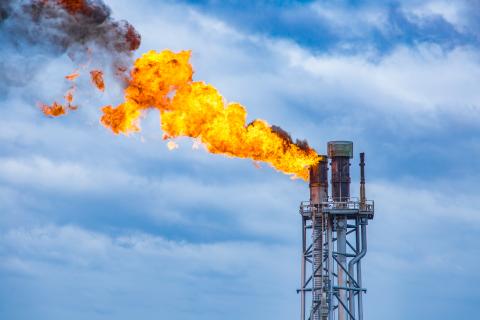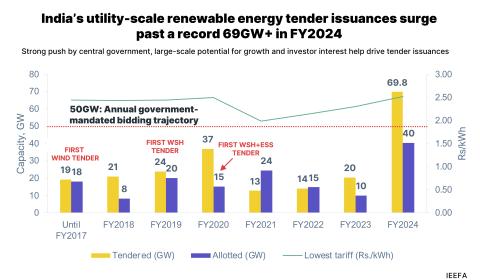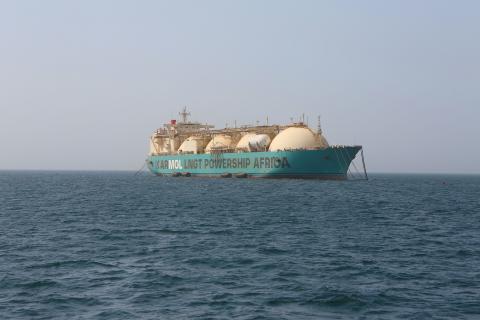Bangladesh must revamp its power system model by keeping space for renewables

Key Findings
Bangladesh’s growing reliance on costly imported fossil fuels for power generation has intensified financial risks, negatively affecting foreign currency reserves and increasing subsidy burdens.
The country’s fossil fuel dependency and power system overcapacity problem might lock out renewable energy.
The upcoming Integrated Energy and Power Master Plan (IEPMP) is a key opportunity to reboot the power system planning process to keep space for renewables.
The upcoming Integrated Energy and Power Master Plan (IEPMP) needs to steer Bangladesh away from the existing calamitous power system model before it is too late.
The master plan should assess the benefits of integrating more renewable energy rather than imported fossil fuels. It should also provide a pathway to incorporate renewable energy with storage facilities in the foreseeable future. These measures would start to provide a much-needed market signal that Bangladesh, despite its limited success so far, envisions working concertedly to accelerate renewable energy installations.
Bangladesh, despite its limited success so far, envisions working concertedly to accelerate renewable energy installations.
Imported fossil fuel dependence intensified risks
Bangladesh’s power sector was apparently sailing smoothly until the Russia-Ukraine war, albeit concerns raised by different experts of the country in the last several years. Load-shedding, particularly in cities, was a matter of the past. This was largely due to the efforts of the Bangladesh government to enhance power generation capacity during the last decade.
However, increasing dependence on imported fossil fuels for power generation has intensified risks, negatively affecting foreign currency reserves and swelling subsidy burdens. In July 2022, the government eventually resorted to precautionary load-shedding, suspended diesel-based power generation and halted Liquefied Natural Gas (LNG) imports from the spot market. Despite falling industrial outputs owing to energy shortages, Bangladesh could not afford to import costly fossil fuels amid dwindling foreign currency reserves.
While the load-shedding scenario has improved on account of lower power demand during winter, Bangladesh may again face a difficult summer in 2023. Without imminent major changes in the power system, Bangladesh would continue to find itself in a tricky position to import LNG, coal and oil.
Prevailing power sector plan poised to increase overcapacity
The revised annual report of the Bangladesh Power Development Board (BPDB) for the fiscal year (FY) 2021-22 shows that the country expects to add 25,840 megawatts (MW) of new power capacity by 2027. As of November 2022, the installed generation capacity in the country was 22,608MW.
Of the 25,840MW of new capacity, power plants of 13,103MW are under construction, and 3,127MW are at contract signing and tendering stages. The remaining 9,610MW of power plants are in the planning phase.
Assuming that the under-construction power plants would realistically come online by 2027 and a phase-out of existing old/inefficient power plants of roughly 3,000MW over the same period, total installed generation capacity would still reach 32,711MW in 2027.
Notably, the maximum peak demand for electricity in Bangladesh was 14,792MW, served by BPDB on 16 April 2022. As the projected Gross Domestic Product (GDP) growth rate for the current fiscal is 7.5% and assuming a similar growth in the next several years, electricity demand could grow at approximately 7% per annum.
Such growth in power demand would raise the peak demand for electricity to 20,747MW in 2027. Keeping a 20% reserve margin beyond it would require an installed generation capacity of 24,896MW in 2027. As a result, surplus power generation capacity in 2027 could be a whopping 7,815MW (23.89%).
Surplus power generation capacity in 2027 could be a whopping 7,815MW (23.89%)
Adequate investment in 97 economic zones, designed to spur economic development, could result in higher growth in power demand in the coming years. The caveat is that even with an 8% growth in peak demand per annum from 2023 to 2027, Bangladesh would have a significant surplus capacity of 6,630MW (20.27%) beyond the 20% reserve margin.
Fossil fuel dependency and overcapacity might lock out renewable energy
More than 80% of the 25,840MW of power plants on the anvil till 2027 will run on fossil fuels, such as gas, LNG, furnace oil, diesel and coal. Renewable energy, like solar, wind and waste, will contribute around 10%. The remaining power will harness nuclear energy.
Further, the private sector and intergovernmental joint-venture arrangements will implement over 50% of the new capacity. With no sign of price stabilisation in the international fossil fuel market soon, imported coal and LNG-based plants, implemented by private and joint-venture arrangements, are likely to deliver expensive power to BPDB. Despite a very high level of surplus capacity, BPDB could still procure costly power from these power plants due to contractual obligations. As such, already engulfed by subsidy burdens, the government might need to allocate additional funds to the power sector to lower average generation costs.
Besides, surplus power generation capacity could lock out the large-scale deployment of renewable energy in the foreseeable future. Given that the current on-grid renewable energy share is less than 3% and upcoming clean energy projects are around 10% of the total power sector pipeline, Bangladesh seems to fall short of the clean energy targets of 30% and 40% by 2030 and 2041, respectively as per the Mujib Climate Prosperity Plan. This is similar to how it fell short of the renewable energy target of 10% by 2020.
Rebooting the power system model is the need of the hour
Growing reliance on imported fossil-fuels-based development and overcapacity have landed Bangladesh’s power sector in a situation that calls for a reboot of the future planning process. There must be measures to stop the bleeding of the power sector.
It is all-important now to revisit the aggressive growth rate of installed power generation capacity, slow down the fossil fuels-based capacity addition and increase the share of renewable energy to reduce the average cost of generation. Both utility-scale and rooftop solar for day-time applications without battery storage would be cheaper than BPDB’s electricity purchase cost of Bangladeshi Taka (Tk) 11.55/kilowatt-hour (kWh) (US$0.11/kWh), from the Independent Power Producers (IPPs) during the FY 2021-22.
While energy storage is still expensive to support renewable energy applications round the clock, Bangladesh should immediately expand clean energy, excluding storage, up to several thousand megawatts.
Alongside this, work on developing the ecosystem for renewable energy storage must commence sooner rather than later. Once battery storage costs decrease to a reasonable level, Bangladesh could move forward with renewable energy storage systems. It would then need a policy push to quickly reach the top of the learning curve to further reduce the cost of renewable energy with storage in the local setting.
This article first appeared in The Business Standard













